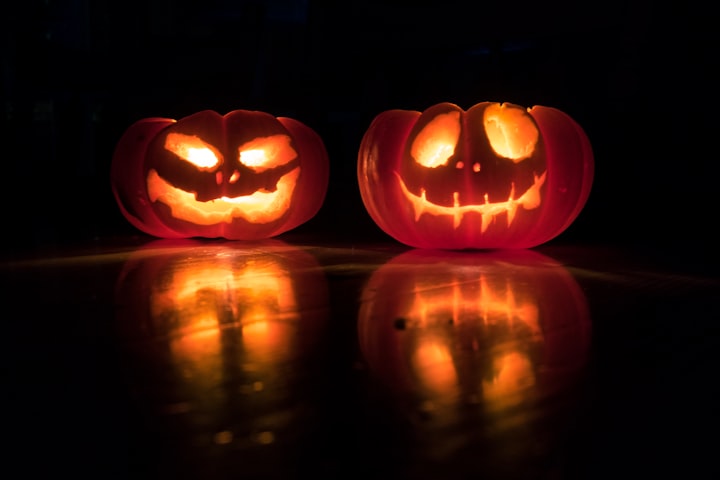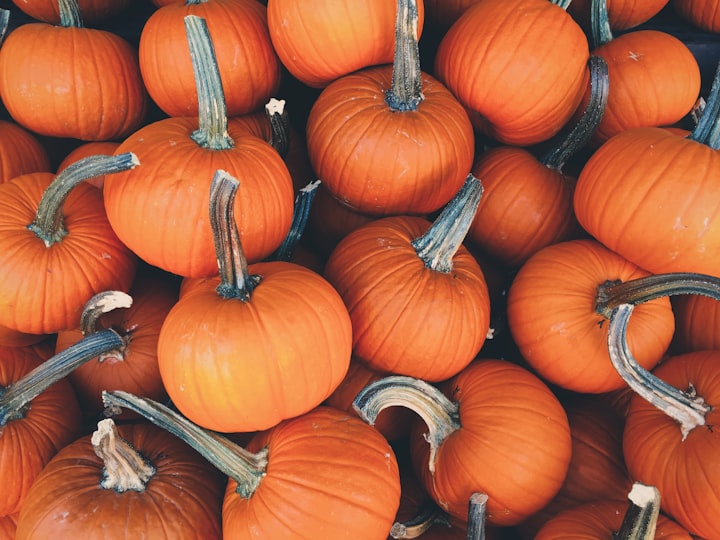The Dark and Strange History of Jack O' Lanterns
The origin story of our favorite Halloween tradition

Every year on Halloween, we decorate the outside of our homes with carved-out pumpkins. Seeing these sinister yet silly faces can make one think of Jack Skellington from The Nightmare Before Christmas. What most of us don't know is why we have these orange heads. How did such a strange tradition start? The origins of jack o' lanterns are mixed. Celtic legends range from beheadings (yes, you heard me right) to simple superstitions. Let's go back in time!
Ancient Celtic War Lords

So, long ago, in ancient Ireland, soldiers thought it would be fun to collect the heads of their fallen enemies. Esteemed foes were embalmed with cedar oil and put on display. The brains of victims become hardened by lime and made into slingshot balls. I guess there was a sick sense of pride back then. Irishmen would also dig up skulls and place them in a burrow with a lit candle inside the head. This ritual was a way to both connect with the ancestors and ward off unwanted spirits.
The ancient Irish revered the human head as, indeed, did all ancient Celtic societies. It was in the head and not in the heart that they seemed to locate the souls of men and women… Archaeological finds give full corroboration to this cult. (Historian, Peter Berresford Ellis)
Stingy Jack

There's an 18th-century folk tale about a mischievous blacksmith named Stingy Jack. Here's how the story goes. Jack invites the devil for a drink, but he refuses to pay the tab. So, he convinces the devil to transform himself into a coin to cover his fee. Instead of paying, Jack stuffs the object in his pocket next to a silver cross, preventing the devil from changing back to his original form. The drunk blacksmith releases the devil in exchange for saving his soul from hell and being left alone for one year.
A year later, the devil comes back, and Jack tricks him again. This time he sends the demon up a tree to retrieve some fruit. A cross is carved in the tree bark to stop the devil from climbing down. Jack frees the devil in exchange for being left alone for ten years.
Eventually, Jack dies, and the devil keeps his promise not to send the man to hell. However, God denies Jack's entry into Heaven for being a scoundrel. Jack's soul now wanders the earth for eternity, with only a lump of burning coal in a lantern to light his way.
This lore inspired the Irish people to use carved turnips as lanterns to avoid Jack and evil spirits. Journalist, Kayla Hertz had this to say about the tradition.
This legend is why people in Ireland and Scotland began to make their own versions of Jack’s lantern by carving grotesque faces into turnips, mangelwurzels, potatoes, and beets, placing them beside their homes to frighten away Stingy Jack and other wandering evil spirits and travelers.
In addition to charming vegetables, Stingy Jack ignited another superstition.
Igniss Fauutus

What is that? Igniss Fauutus is a natural occurrence where lights flicker above marshes and bogs. The combustion of gas emits from decomposing plant matter. Gross, right? This eerie phenomenon is also known as false fire or fairy lights. Many believe these flashes to be lost souls or Jack the Lantern himself. Because of this, fear-mongers stay clear of the marshes when false fire rises.
If you were to try to follow the light, you could go into a sinkhole or bog, or drown. People thought it was Jack of the Lantern, a lost soul, or a ghost. (National Geographic)
The Use of Pumpkins

Impoverished Irishmen fled to America during the Great Potato Famine of 1840. With them, they brought their Celtic traditions, including the carved turnips. Along the way, they discovered the American native plant, pumpkins. The Irish folks realized that the round and big orange shapes were perfect for making the famous lanterns. That's how we got the iconic image of Jack o' lanterns associated with Halloween.
“Though they were not skull-white like turnips, they were large and easy to carve and cast a benevolent golden light.” (Cerridwen Fallingstar, teacher, author)
So, there you have it. That is the dark evolution of jack o' lanterns. It was a frightful tale of decapitated heads and devilish deeds. Still, that's what Halloween is all about. The celebration of the macabre and the morbid.
Happy Halloween! Thank you for reading. You can show further support by tipping, clicking the heart, and subscribing (if you haven't already). You can also follow me on Twitter, Pinterest, and various Vocal Facebook groups.
Sources: History Channel, Irish Myths, Reder's Digest, Carnegie Museum of Natural History
About the Creator
Sarah Loyd
I love movies, music, TV, and all things entertaining. I also love to write poetry. Follow me on Twitter @musicl0v3 and on Mix https://mix.com/sarahloyd You can also find me on Pinterest @sloydmarie






Comments
There are no comments for this story
Be the first to respond and start the conversation.